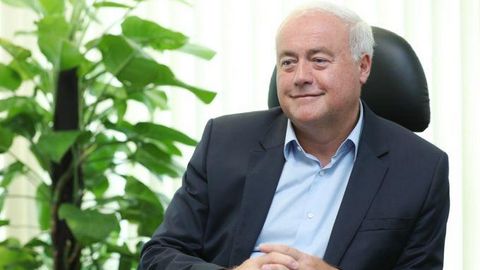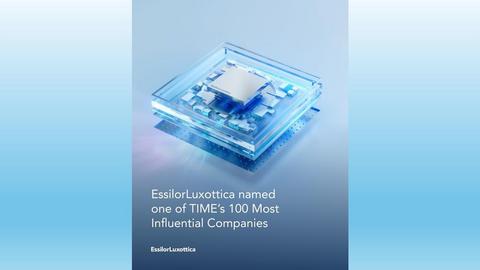Companies news
Singapore Business Times interview: In for the long haul

The chips may have been down of late for the semiconductor sector, but ST Microelectronics' Jean-Marc Chery, an industry veteran, remains upbeat about its future.
JEAN-MARC Chery is back in his old seat in Singapore after more than a decade. The 59-year-old president and chief executive of Franco-Italian semiconductor group STMicroelectronics was posted to the Republic in 2005, when he was tasked with handling a companywide restructuring programme. He later headed the company's Asia-Pacific front-end manufacturing and electrical wafer sort operations before leaving in mid-2009 as the group's chief technology officer.
Now, he's in town for the opening of ST's latest manufacturing facility - dubbed SG8E FAB - as the company marks 50 years since its first site, an assembly and test plant, in Singapore.
"It's a nice place, Singapore. I am very happy to come back here," says Mr Chery, telling The Business Times that he stops by twice or thrice a year and noting that "it's very, very useful for me to use Singapore as a hub".
Singapore-style
Mr Chery sings the praises of Singapore as a semiconductor industry hub: "This location is very useful, with the airport, to address Taiwan, the Philippines, Malaysia, even Shenzhen, where we have our plant. "And we have many customers in Asean, very important customers, so for me it's very easy to land here, to have discussions with headquarters, and then to fly into Taiwan, then to fly into China, visit a plant."
But surely some aspects of the business must have changed in the decade since he ran the show here? To that, he points at the company's growth pivot, which he calls "a measure of strategic inflection in ST".
Under then CEO Carlo Bozotti, Mr Chery's predecessor, ST unveiled a transformation road map in 2012. That plan put redoubled focus on two key product segments: sensor, power and automotive equipment, such as micro-electro-mechanical systems (Mems) and car info-tainment systems; and "embedded processing solutions" for electronics systems - devices such as micro-controllers, rather than wireless broadband gear.
"We are completely changing the mix - the technology mix and the market the fab is addressing - so we are preparing the future of this because, for flash, this fab is obsolete now," Mr Chery says from what used to be his office in Ang Mo Kio's ST TechnoPark, which was opened in 2004.
ST is no stranger to moving with the times in the Republic, with Deputy Prime Minister Heng Swee Keat last year calling the company "an old and committed friend of Singapore" since it set up a first assembly and test plant in Boon Keng in 1969.
Along with Singapore's evolving role as a chip powerhouse, ST opened a five-inch fab in 1984, before graduating to six-inch wafer production in 2000 and eight-inch wafers in 2010.
In fact, Singapore is a key manufacturing site for Geneva-based ST, alongside wafer fabs in Agrate Brianza and Catania in Italy, and Crolles, Rousset, and Tours in France.
That's even as trade publication eeNews Europe reported in 2018 that Mr Chery "feels ashamed of how poorly Europe has performed in electronics", and quoted him as telling industry professionals: "It is clear that Europe has totally failed to be a leader in connecting 5 to 10 billion people."
But now, when asked whether he is concerned that his home continent has lagged behind other regions in chipmaking, he replies adamantly that "I am not afraid about Europe".
"I'm more afraid when I see a set of constraints - trade war, limitations on growth," he continues. "All this kind of stuff is more difficult. But I am not afraid about Europe's capability, its key role in the world. Absolutely not."
Mr Chery goes on to name - as a strength that he sees shared between Europe and Singapore - both markets' ability to build up industry clusters.
"I am a strong believer in ecosystems... Certainly the future of Europe is its capability to keep ecosystems like automotives or mobility," he says.
That's also his response to how Singapore is already chock-full of semiconductor companies running the span of the value chain, including some that he names as direct competitors - for example, Infineon and NXP.
"For Singapore to have many semiconductor companies across the value chain - equipment, materials, chemicals, wafer fabs - is very good. Please keep it. Please push for that.
"Ecosystems are the best, because if you start to see that you have to change the ecosystem or break down the ecosystem - to keep only part of one - they (companies) will start to move out. So ecosystems are very important.
"We are very pleased to see Singapore with a strong semiconductor ecosystem. It's good because the workforce is well trained, universities are semiconductor-oriented, research institutes like A*Star. So you have many things coming with the ecosystem."
Mr Heng has lauded ST for investments - US$5 billion in two decades - that affirm Singapore's approach to the economy: "one that is both pro-business and pro-worker, and based on a strong commitment to forge win-win partnerships with our stakeholders".
When asked about ST's commitment to its 5,000-strong headcount here, Mr Chery picks up the thread: "One of the characteristics of the workforce you find in Singapore is a great mix between very senior, experienced people, and the newcomers...
"Also, we are committed to a very, let's say, strong code of conduct. We have very strong engagement on sustainability, and I think for the younger generation, environmental sustainability is very important.
"Then what we have demonstrated is ST's capability to maintain a high level of technical skills or the capability to support our people to change their jobs and adapt themselves to something new," he concludes.
ST's manpower and skills development efforts here have included participation in the Singapore Industry Scholarship and hiring graduates of the Institute of Technical Education's "work-learn technical diploma" in microelectronics.
But Mr Chery laughs at the suggestion that ST might follow the example of private consumer electronics giant Dyson, which announced plans last January to shift its headquarters from Malmesbury in England, to Singapore.
"No, no," he chuckles. "We love Singapore, but ST is a French and Italian company. It's a worldwide company but ST is French and Italian, and one of the unique, successful mergers in any semiconductor company in the world. So, our core DNA is France and Italy, but we are a global company."
Staying fresh
No two ways about it, 2019 was an annus horibilis for the global semiconductor market: Industry watcher World Semiconductor Trade Statistics projects sales to fall by 12.8 per cent year-on-year, to US$409 billion.
But Mr Chery is convinced that ST is on the right track, telling BT that a market downturn just calls for new products and new technologies.
"The semiconductor industry is very complex. Products are complex, technologies are complex, the markets we serve are complex," he says.
"You have no more innovation without electronics and without semiconductors. So we are operating in a very complex, fast-changing world, and now, in a world where we move from friendly globalisation to less-friendly globalisation... the friendly relationship, the fair relationship, the transparent relationship with the authorities are very important.
"Why? Because there are good moments and there are challenging moments, and not only good moments.
"Sometimes, we have to take difficult decisions to protect the short term, to preserve - ST is a public company, so we need always to preserve our net financial position... But we are committed for the long term, and the authorities, when we discuss with the government, they always support us and are ready to support us even when the short term is very difficult."
While the prognostication is for double-digit decline, ST expects its own annual decrease to clock in at 1.7 per cent - "a demonstration that we are performing better than the total available market", he declares.
Group turnover was US$6.8 billion for the nine months to Sept 28, 2019, down by 3.1 per cent year on year.
By way of explanation, Mr Chery suggests that "we perform better than the market because we have decided a few years ago to really concentrate on high-growing applications: electrification of the car, digitalisation of the car, depth-map sensing, (three-dimensional) sensing, digitalisation of applications in industry", even as he rattles off a list of products, such as power mosfets (metal oxide-semiconductor field-effect transistor) and silicon carbide, that are expected to enable energy-efficient electric vehicles.
"So we have developed many products, many technologies, enabling electronic systems which are key for the high-growing applications," he notes.
"And thanks to this positioning on high-growing applications, which are less sensitive to the overall legacy market, ST is demonstrating now, since 2016, that we perform better than the market we serve."
Reiterating a growth target of making US$12 billion by 2022, Mr Chery says: "So this is what changed: The market changed, the applications changed, and ST changed itself."
He goes on to add that talent management "is a measure of competitive advantage" for the group: "ST doesn't need to acquire other companies. ST has the full people, skills and behaviour, of course; the infrastructure, the technology, to continue to grow."
ST had to let go about 1,400 workers in 2016 - close to one-half of them from Asia - as the group moved to restructure its set-top box business.
But, even as Singapore's manufacturing workforce gets leaner - the semiconductor industry here employed 35,000 in 2018, against 43,100 in 2008 - Mr Chery shrugs off the spectre of mass layoffs amid the rise of machines.
"Oh, you know that in manufacturing, clearly automation is changing the profile of the jobs you need," he says. "Clearly, when the operations are really manual, you need people with manual capabilities. When operations are becoming automated - in terms of recipe loading activities, process control - you need more technical and proficient ones...
"The profile of the workforce is still intense in terms of operators, but you have a lot of technicians and professionals as well. Clearly, this mix will change in the near future.
"Last but not least, do not forget that our mission is to grow faster than the market, and for sure we'll need more wafers. But, in parallel, more wafers and being more productive, we expect to be at least able to maintain the current workforce as it is today - but with a different profile."
The preference for keeping the expertise all in the family - as it were - clearly extends to the CEO himself.
Mr Chery has been with STMicroelectronics since 1986, when he joined predecessor French firm Thomson Semiconducteurs just a year before its merger with Italy's SGS Microelettronica. His career has taken him through the fabs in Tours and Rousset in France, as well as to Singapore.
After a professional life in ST, Mr Chery is amused by a question about any plans to try something new.
"I maintain my body at the best, of course. I practise mountain-biking. For a CEO, it's important to be in physically good shape because we have a very tough life - we move from the US to Asia, Europe, and so forth," he says.
"I grew within ST because I've been working for ST for 33 years, 34 years. I've done many jobs and one of the important jobs that I've done was the one in Singapore, transferring technology… Me, I will retire from ST.
"I will have no other job. My dream, after ST, would be to go into education. I would like to pass down my experience to people, because when you are lucky to start as a young engineer (and) having done 15 different jobs in many locations, for an industry exposed to many various industries, I do believe I have something to pass on to people."
Source: https://www.businesstimes.com.sg/the-raffles-conversation/in-for-the-long-haul


